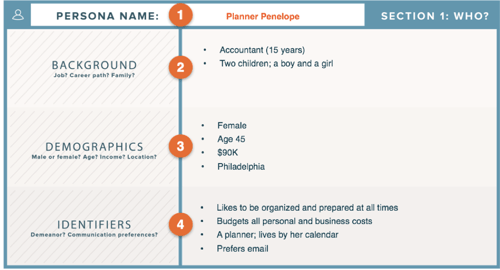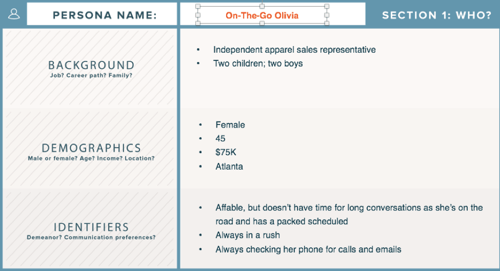How special does a one-size-fits-all approach make you feel? Probably not very.
Consumers weed through more content than ever these days, which has companies buzzing about market segmentation. In order to move a lead to take action, a generic email just isn’t going to cut it. And while catchy titles help, you can’t fool consumers that easily. Your messaging has to speak to your audience directly and prove that you’re providing value to them. Segment and nurture your leads to provide an experience that is tailored to your readers' specific needs.
What Is Segmentation?
 Segmentation is a top priority for marketers, and for good reason. A recent report found that marketers who deliver a personalized experience receive double digit returns in performance and response. Segmentation is the process of separating your pool of leads (or customers) into various “buckets”, based on a number of categories ranging from geography to job description. Segmenting your leads allows you to provide a personalized experience that is relevant and meaningful. It provides a path to nurture your audience with the right content, at the right time.
Segmentation is a top priority for marketers, and for good reason. A recent report found that marketers who deliver a personalized experience receive double digit returns in performance and response. Segmentation is the process of separating your pool of leads (or customers) into various “buckets”, based on a number of categories ranging from geography to job description. Segmenting your leads allows you to provide a personalized experience that is relevant and meaningful. It provides a path to nurture your audience with the right content, at the right time.
It might sound simple, but it’s a time-consuming process that takes a lot of focus and prioritization. If audience segments get too granular, you run the risk of getting caught in the weeds and your efficiency will suffer. If your scope is too wide, then your messaging will be unclear and too generic.
“Segment your leads carefully using buyer personas, smart forms, and web analytics,” says @RspnsvInbndMktg Click To Tweet
Marketers use many methods to segment their leads; buyer personas, smart forms, and web analytics are all ways that inbound marketers collect information and differentiate. It’s one of the reasons why landing pages are critical to your inbound strategy. Smart forms provide you with an opportunity to gather information about a customer that will help you further segment and nurture your leads down the funnel.
[DOWNLOAD]

Let’s take a closer look at how buyer personas can be helpful for segmenting your leads.


Based on the behavioral information we can gather from “Background” and “Identifiers,” would you ever approach these two leads using the identical method or message? Probably not. While Penelope would be nurtured with a clear-cut email outlining the details of your product in a very methodical way, Ollie wouldn’t have time to read, never mind click through, a long, detailed email.
In the example above, our buyer personas were sorted by behavioral factors, but you might choose to differentiate your audience by geographic location, for example. Identify relevant and significant segments for your particular business and goals.
5 Reasons Why You Should Segment and Nurture Your Leads
1. Better Conversions – at the heart of your inbound marketing efforts is conversion, and according to Emarketer and Neil Patel, “39% of email marketers who segment their email lists see better open rates and 28% saw better email deliverability and earned more revenue.” You shouldn’t be surprised. If you want your leads to take action, prove to them that you know them and that you can add value.
2. Build Rapport. Most people like some personalized attention. In fact, fifty-eight percent of consumers say a personalized experience is very important when purchasing from a company (Salesforce.com). When your messaging shows that you’ve taken the time to wade through the data and get to know your audience, it pays off in the form of trust. Establishing a relationship with your leads not only results in better conversions, it also creates an opportunity to establish brand evangelists.
3. Better Sales Pitch. Every time you nurture a lead further down the funnel, it’s an opportunity to learn more about them. Every activity that they take (or don’t take) provides you with valuable information. Analyze their behaviors like which links they’re clicking through or at what time of day they’re most likely to open their emails. Your sales team can use that data to tailor their sales pitch when the time is right.
4. Speed Up Purchase Time. In some cases, strong segmentation and lead nurture can speed up the buying process. Instead of presenting a lead with 10 different product offerings, when only 3 of those are relevant to their purchasing needs, jump ahead and focus your efforts only on those products that your lead qualifies for.
5. Develop Stronger Content and Strategy. Lead segmentation and nurture pays off, even when leads do not convert. When you’re properly targeting your customers with relevant content and information, it provides you clearer insight into what’s working and what is not. When you send a generic email out to all 500 of your leads, you’re left wondering why you only have a 10% open rate – it could be a number of things! Having a better handle over your categories of customers will lead to better insight and more controlled tactics moving forward.
As with anything in inbound marketing, know your goals before you segment your leads. Find strong differentiators that matter to your particular business, and segment accordingly.
